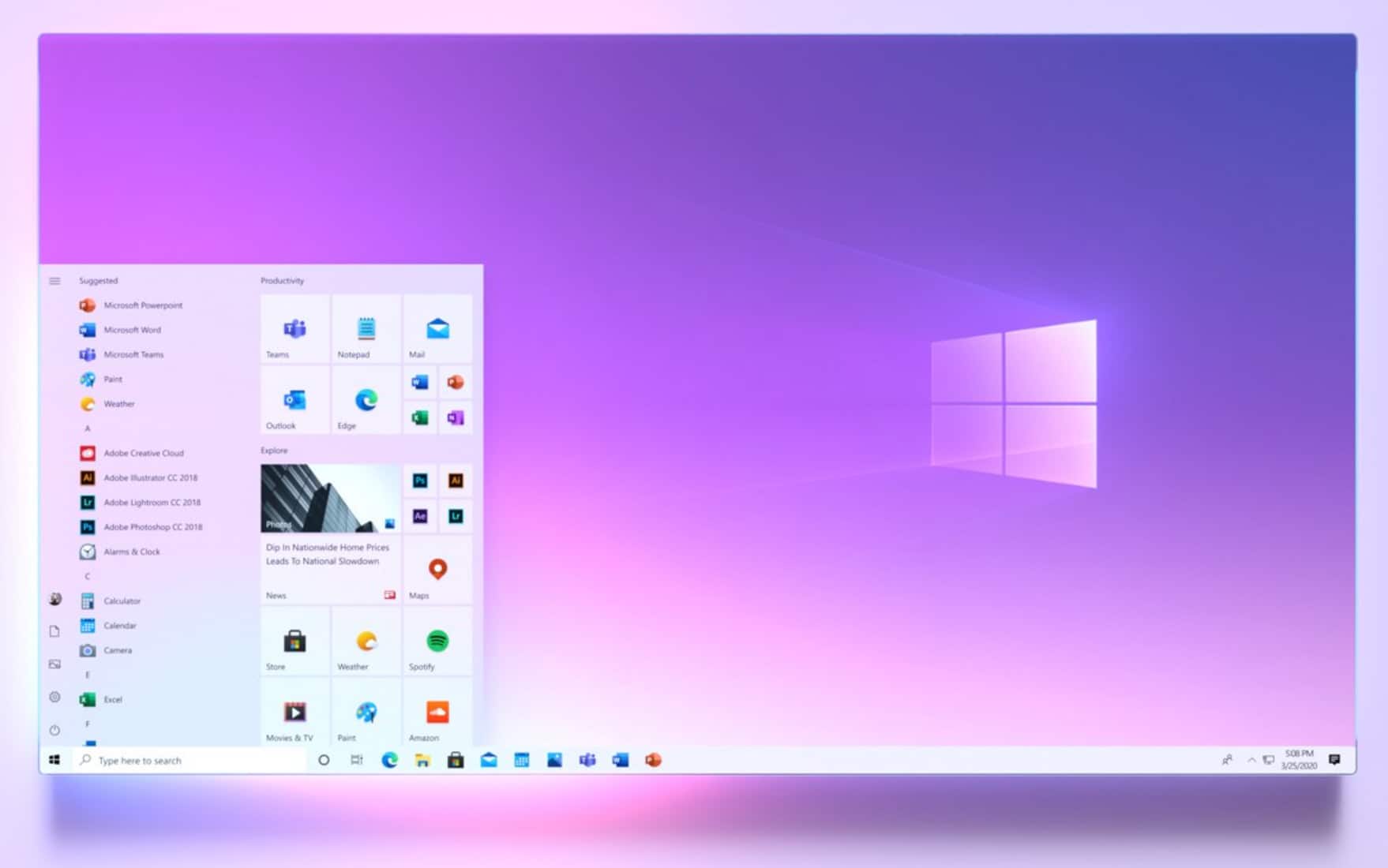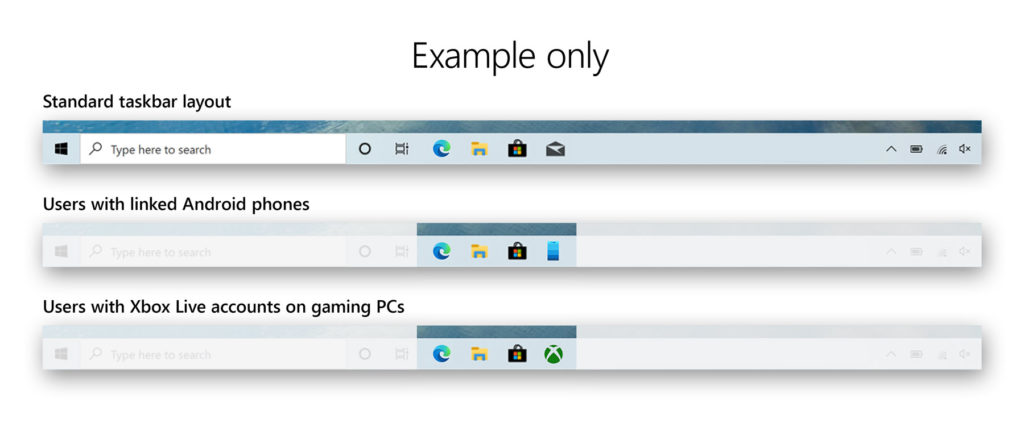Microsoft releases Windows 10 Build 19042.421 (20H2) to the Beta Channel with theme-aware tiles in Start and much more

Earlier in the week, Microsoft rolled out a new Windows 10 build for Insiders on the Dev Channel, introducing quick access to tabs on pinned sites, the ability to reset UWP apps via PowerShell, and more.
Today, the software giant delivers a new build to those on the Beta Channel (what used to be the Slow ring), with the main new change affecting the Start menu, but there's a lot more than just that.
SEE ALSO:
- Quickly batch-remove built-in and sponsored apps from Windows 10
- How to unlock hidden Windows 10 features -- including the brand new Start menu
- Force Windows 10 to always use YOUR choice of browser and search engine
The new Start menu has a streamlined design, removes the solid color backplates behind logos, and adds a partially transparent background to the tiles. You can find out more about it here.
Build 19042.421 also gains Microsoft’s tweaked Alt+Tab feature which will show all open tabs in Microsoft Edge, not just the active one in the browser window. If you want to see fewer tabs, Microsoft has also added some new settings for Alt+Tab under Settings > System > Multitasking.
This build also provides quick access to tabs on pinned sites in Microsoft Edge. If you pin a site on the taskbar, clicking it will show you all of the open tabs for it across all Edge windows.
Both changes require a Canary or Dev build of Microsoft Edge (version 83.0.475.0 or higher).
There's also a personalized taskbar for new users which will appear when you create a new account or logon for the first time. It changes what’s displayed based on what you use:

Notifications have been improved starting from this build, so you can easily see where each alert has come from and close ones you don’t need by clicking on the corner x. Microsoft is also turning off Focus Assist notification and summary toast by default going forward, although you can change this back in Settings.
Talking of Settings, Microsoft is continuing to port over features from Control Panel and information found in Control Panel’s System page is being migrated into the Settings About screen under Settings > System > About.
Changes, Improvements, and Fixes include:
- Fixed an issue that causes error messages to display in the English US (en-US) language instead of in the non-English language you selected. This occurs when you install a non-English language pack before installing the latest cumulative update.
- Fixed the toast notification that appears at restart when you update from Windows 10, version 2004.
- Fixed an issue that causes non-English strings to disappear, which might affect the text on the tiles of the Start menu.
- Fixed an issue that prevents you from using sharing functionality in Microsoft Office. This occurs when Conditional Access is enabled.
- Fixed an issue that occurs when a third-party application loads hidden tabs into Internet Options.
- Fixed an issue in Microsoft Edge IE mode that occurs when you open multiple documents from a SharePoint site.
- Fixed an issue in Microsoft Edge IE mode that occurs when you browse using anchor links.
- Fixed an issue with pasting mixed content of images and text from Microsoft Word into Internet Explorer.
- Fixed an issue that might cause Microsoft browsers to incorrectly bypass proxy servers.
- Fixed an issue in the Windows Push Notification (WNS) service that prevents you from selecting a virtual private network (VPN) interface to make outbound connections. As a result, you lose connectivity with the WNS service when forced tunneling is used.
- Fixed an issue that might cause the Magnifier to stop working in Microsoft Excel in certain scenarios. As a result, Microsoft Excel might also stop working.
- Fixed an issue that prevents you from installing some .msi apps. This occurs when a device is managed by a Group Policy that redirects the AppData folder to a network folder.
- Fixed an issue that might display 4K high dynamic range (HDR) content darker than expected when you configure certain non-HDR systems for HDR Streaming.
- Fixed an issue that causes new child windows to flicker and appear as white squares on server devices that are configured for stark visual contrast.
- Fixed an issue that causes the Settings page to close unexpectedly, which prevents default applications from being set up properly.
- Fixed an issue that causes all open Universal Windows Platform (UWP) apps to close unexpectedly. This occurs when their installer calls the Restart Manager to restart File Explorer (explorer.exe).
- Fixed an issue that prevents Windows 8.1 apps from projecting to a secondary display when those apps use the StartProjectingAsync API.
- Fixed an issue that prevents family safety features, such as time limits and activity reporting, from working on ARM64 devices.
- Fixed an issue with File Explorer’s preview of .msg files when Microsoft Outlook 64-bit is installed.
- Fixed an issue that causes a KERNEL_SECURITY_CHECK_FAILURE (139) stop error when Windows resumes from Sleep and turns on certain Bluetooth headsets.
- Fixed an issue that might prevent certain display driver reset utilities from properly reinstalling the same driver on the system.
- Fixed a reliability issue in WDF01000.sys.
- Fixed an issue that causes memory leaks when an application calls the CryptCATAdminCalcHashFromFileHandle() function. The leaked memory is reclaimed when the application closes.
- Improved support for non-ASCII file paths for Microsoft Defender Advanced Threat Protection (ATP) Auto Incident Response (IR).
- Fixed an issue that prevents some machines from automatically going into Sleep mode under certain circumstances because of Microsoft Defender ATP Auto IR.
- Fixed an issue that prevents some machines from running Microsoft Defender ATP Threat & Vulnerability Management successfully.
- Fixed an issue that prevents Microsoft Defender ATP from applying file exclusions in some cases, which leads to application compatibility issues.
- Fixed an issue in Microsoft Defender ATP that prevents some machines from reporting the installed applications to Threat & Vulnerability Management.
- Fixed an issue that causes automatic investigations to fail in Microsoft Defender ATP.
- Improved Microsoft Defender ATP’s ability to identify malicious code injection activities.
- Fixed an issue that prevents some applications from printing to network printers.
- Fixed an issue that might cause a printer to be a hidden device in Device Manager after a restart.
- Fixed an issue that might cause the Print Management console to display script errors when you enable the Extended View option.
- Fixed an issue that causes printing to fail in certain scenarios.
- Fixed an issue that might prevent a Windows 10 device from reaching the internet when using a wireless wide area network (WWAN) LTE modem. However, the Network Connectivity Status Indicator (NCSI) in the notification area might still indicate that you are connected to the internet.
- Fixed an issue that might prevent internet connectivity on some cellular modems after upgrading to Windows 10, version 2004.
- Fixed an issue that causes telephony applications to lose the first four digits.
- Fixed an issue with in-memory parity bitmaps that can cause data integrity issues on Parity Storage Spaces.
- Fixed an issue that prevents the creation of a storage pool using Manage Storage Spaces in Control panel.
- Fixed an issue that might cause the Microsoft Remote Assistance process (msra.exe) to stop working when a user is receiving assistance during a computer session. The error is 0xc0000005 or 0xc0000409.
